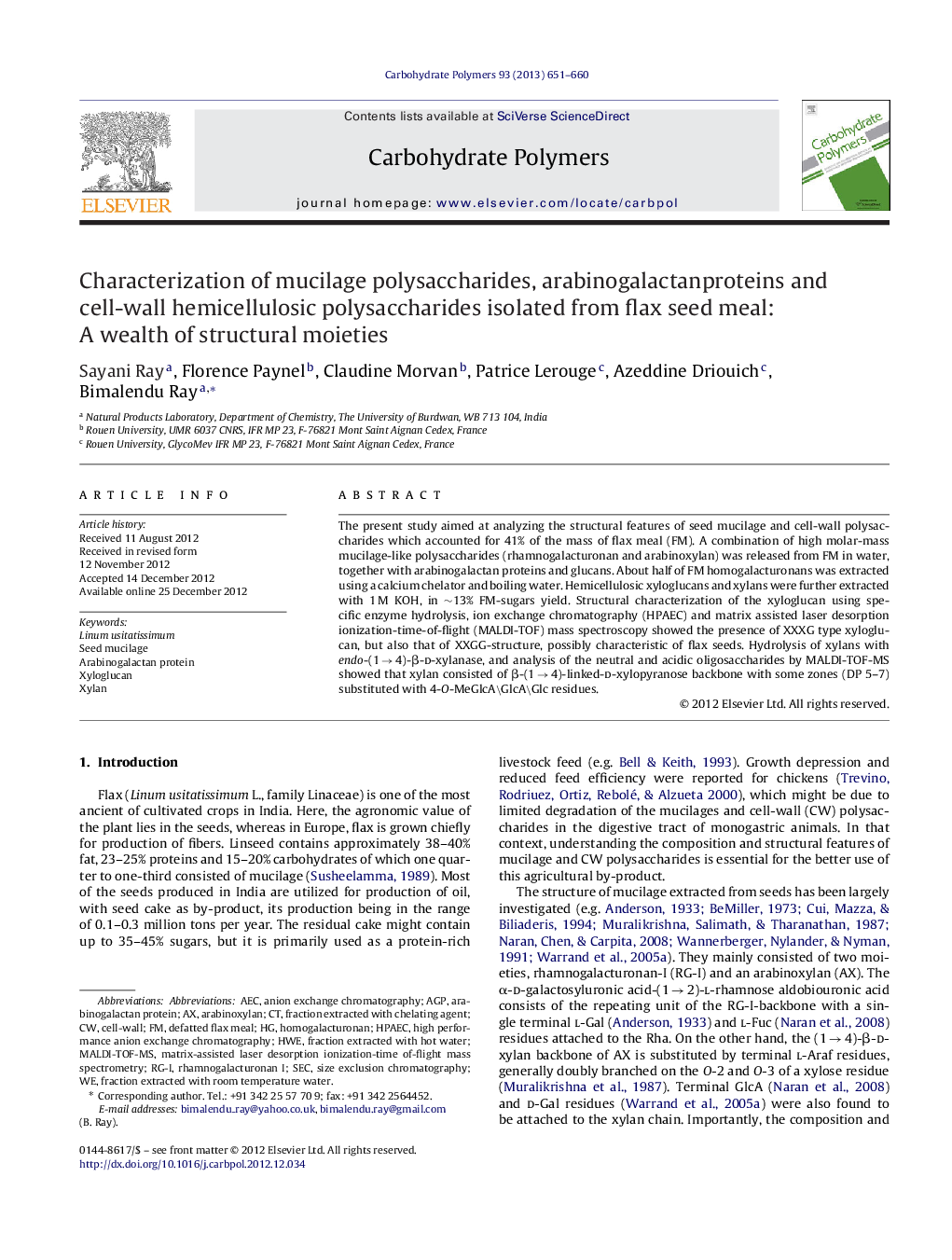| Article ID | Journal | Published Year | Pages | File Type |
|---|---|---|---|---|
| 1384375 | Carbohydrate Polymers | 2013 | 10 Pages |
The present study aimed at analyzing the structural features of seed mucilage and cell-wall polysaccharides which accounted for 41% of the mass of flax meal (FM). A combination of high molar-mass mucilage-like polysaccharides (rhamnogalacturonan and arabinoxylan) was released from FM in water, together with arabinogalactan proteins and glucans. About half of FM homogalacturonans was extracted using a calcium chelator and boiling water. Hemicellulosic xyloglucans and xylans were further extracted with 1 M KOH, in ∼13% FM-sugars yield. Structural characterization of the xyloglucan using specific enzyme hydrolysis, ion exchange chromatography (HPAEC) and matrix assisted laser desorption ionization-time-of-flight (MALDI-TOF) mass spectroscopy showed the presence of XXXG type xyloglucan, but also that of XXGG-structure, possibly characteristic of flax seeds. Hydrolysis of xylans with endo-(1 → 4)-β-d-xylanase, and analysis of the neutral and acidic oligosaccharides by MALDI-TOF-MS showed that xylan consisted of β-(1 → 4)-linked-d-xylopyranose backbone with some zones (DP 5–7) substituted with 4-O-MeGlcA\GlcA\Glc residues.
► Thirty percent of the matter of flax meal can be selected for specific applications. ► Besides RG-I and AX mucilages, HGA, Ara and Glc rich moieties, and AGP are present in flax meal. ► Structure of flax seed hemicelluloses was proposed for the first time. ► Structural analysis confirms that the isolated xylan was a branched heteroxylan. ► The xyloglucan is XXXG-type but also contain XXGG structure.
